Petite Cross Stitch, an artful embodiment of precision and delicacy, stands as a testament to the intricate beauty achievable through the marriage of needle and fabric.
In this meticulous form of needlework, petite stitches come together to create miniature masterpieces that captivate with their fine details and refined craftsmanship.
The essence of Petite Cross Stitch lies in the subtlety of its execution, with each petite stitch contributing to a canvas of artistry that transcends its diminutive scale.
As enthusiasts embark on the journey of creating these small wonders, the choice of fabric, needle, and the patient arrangement of threads play pivotal roles in bringing these petite stitches to life.
This introduction invites you to explore the world of Petite Cross Stitch—a realm where creativity converges with precision to weave intricate tales in the language of stitches.
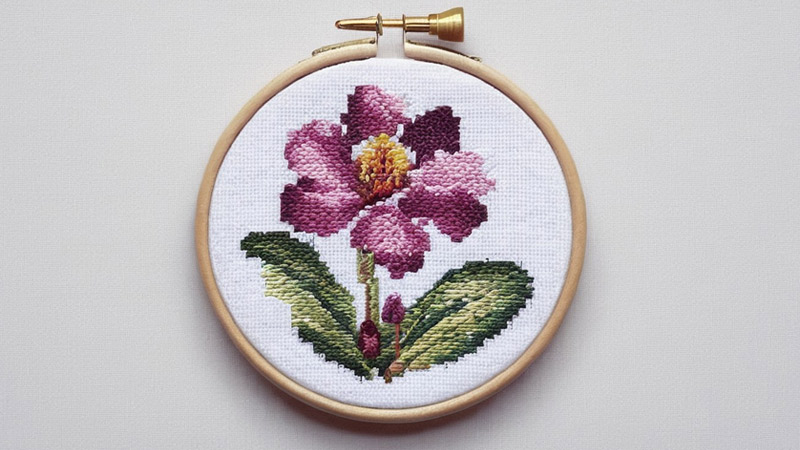
What Is Petite Cross Stitch?
A petite cross stitch is a delicate and intricate form of needlework that involves creating small, detailed designs on fabric using tiny stitches.
This technique, known for its precision and fine craftsmanship, emphasizes creating intricate patterns and images on a smaller scale.
The term petite stitches aptly captures the essence of this art, highlighting the diminutive size of the individual stitches that come together to form the overall design.
Enthusiasts of petite cross stitch appreciate the meticulous nature of the craft, which often requires patience and a keen eye for detail.
The resulting pieces showcase a unique charm, as petite stitches allow for the creation of intricate and visually appealing designs on a smaller canvas, making each project a labor of love and skill.
How To Do Petite Stitches Cross Stitch?
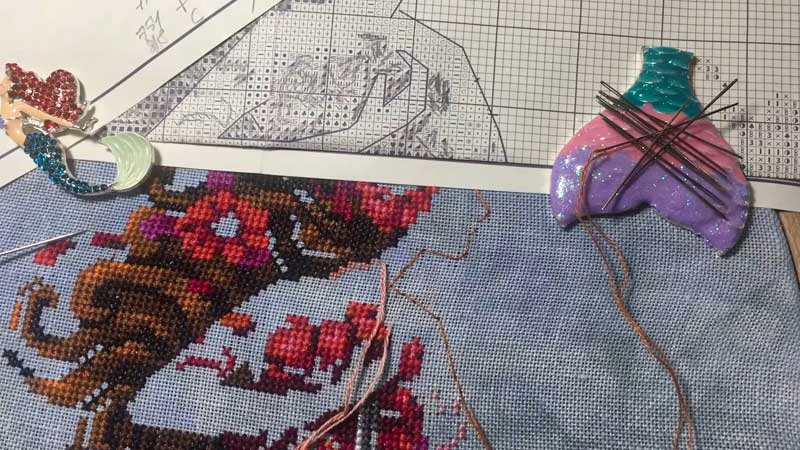
Embarking on the art of petite stitches, cross stitch requires attention to detail and precision. In this intricate form of needlework, small, delicate stitches play a crucial role in bringing designs to life on a smaller scale.
Here are seven simple methods to master the art of petit point cross stitch and create stunning projects with tiny cross stitch details.
Choosing the Right Fabric
Selecting the appropriate fabric is essential for achieving the desired outcome in petite stitches cross stitch. Opt for a high thread count fabric, such as Aida, with a higher count per inch, to provide a finer base for your tiny stitches.
This ensures that each petite stitch is well-defined and contributes to the overall precision of the design.
Using a Smaller Needle
In petite stitches cross stitch, the needle’s size plays a crucial role in maintaining the delicate nature of the project. Choose a smaller needle size to create tiny, uniform stitches.
A fine needle helps navigate through the fabric smoothly, ensuring each petit stitch is accurately placed, contributing to the overall intricacy of the design.
Sorting and Separating Threads
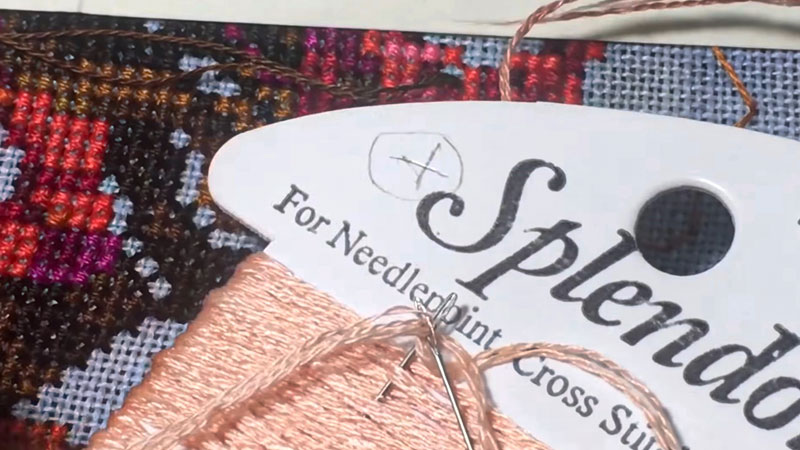
Achieving the right color variations is key to the success of tiny cross-stitch projects. Take the time to sort and separate embroidery threads, ensuring consistency in color throughout the design.
This meticulous approach enhances the visual appeal of the petite stitches, creating a harmonious and detailed finished product.
Using a Single Strand of Floss
Consider using only a single strand of embroidery floss for finer details in petit point cross stitch. This allows for greater control over the thickness of each stitch, resulting in a more delicate and refined appearance.
Single strands contribute to the intricacy of the design, making the overall project visually captivating.
Employing Half and Quarter Stitches
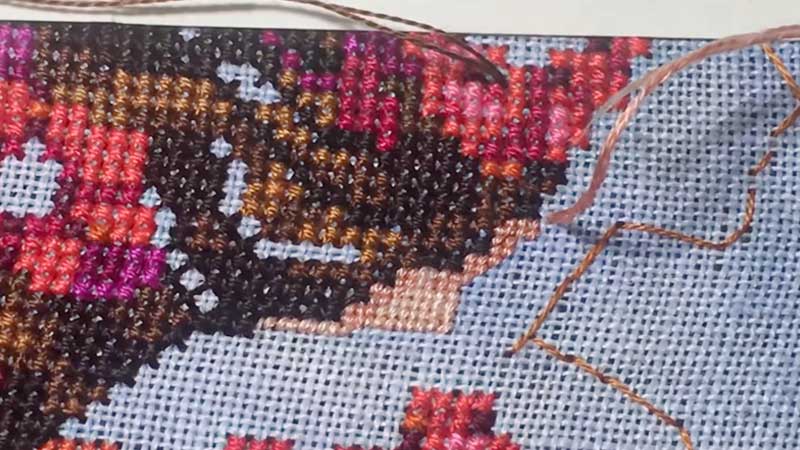
Incorporate half and quarter stitches to add depth and dimension to your petite cross-stitch project. These smaller stitches create nuances in the design, enhancing its overall intricacy.
The combination of petite stitches and fractional stitches contributes to a more detailed and realistic depiction of tiny cross-stitch patterns.
Regularly Checking Tension
Maintaining consistent tension in petite stitches cross stitch is crucial for a polished finish. Regularly check and adjust the tension of your stitches to ensure uniformity across the entire project.
Consistent tension enhances the overall appearance of petite stitches, creating a visually appealing and professional-looking finished piece.
Framing with Care
When completing your petit stitch masterpiece, choose a frame that complements the delicate nature of your tiny cross-stitch design. Opt for smaller frames with intricate details to showcase the precision and artistry of your petite stitches.
The right framing enhances the overall presentation, allowing viewers to appreciate the intricate details achieved through petite cross stitch.
Petit Point Vs. Cross Stitch
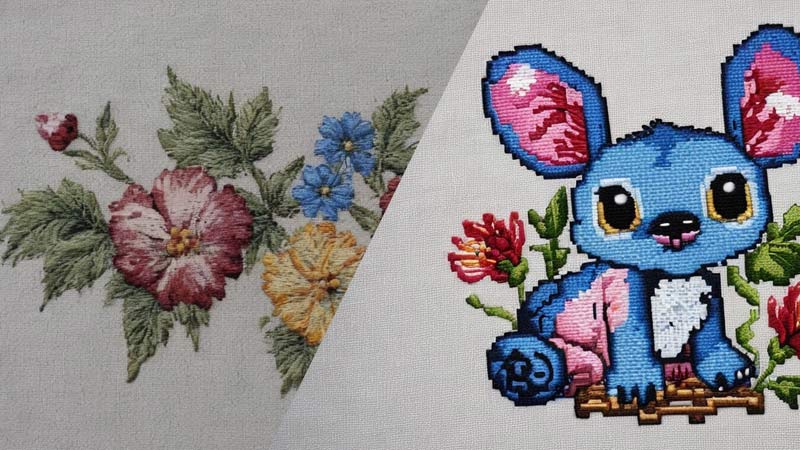
Here’s the difference between petit point and cross stitch:
| Aspect | Petit Point | Cross Stitch |
| Basic Technique | Petit point involves creating small, fine, and precise stitches on a fabric, often using single threads. The emphasis is on intricate details and delicate workmanship. | Cross stitch uses X-shaped stitches to form a grid pattern on the fabric. Each X represents one stitch, creating a recognizable and uniform appearance. |
| Stitch Style | Cross stitch is versatile and can be applied to various projects, including samplers, decorative items, and larger fabric surfaces. It is popular for creating bold and colorful patterns. | Cross stitch employs larger, more visible stitches that are easier to see with the naked eye, making it a popular choice for various designs and patterns. |
| Purpose and Use | Petit point is often used for creating highly detailed and realistic images, particularly in miniature or small-scale projects. It is suitable for fine art and intricate designs. | Petit point is commonly done on fabrics with high thread counts to accommodate the small and precise stitches, such as linen or even weave fabrics. |
| Fabric Choice | Cross stitch can be applied to small and large projects, offering flexibility in project size and complexity. | Cross stitch can be done on various fabrics, with Aida cloth being a popular choice due to its visible grid, making it easier for stitch placement. |
| Needle Size | Petit point often requires the use of smaller needles to accommodate the tiny stitches and achieve the desired level of detail. | Cross stitch generally uses larger needles, suitable for the size of the fabric and the larger stitches. |
| Detail and Realism | Petit Point is well-suited for small-scale projects, such as miniatures, dollhouse items, and other projects where fine detail is essential. | Cross stitch can capture detail, but its larger stitches make it more suitable for stylized and bold designs rather than fine details and realism. |
| Project Size | Petit Point is renowned for capturing intricate details, making it ideal for creating realistic and highly detailed images, especially in miniature formats. | Petit Point may have a steeper learning curve due to the precision required in handling small stitches, making it more suitable for experienced stitchers. |
| Learning Curve | Petit point may have a steeper learning curve due to the precision required in handling small stitches, making it more suitable for experienced stitchers. | Cross stitch is generally considered more beginner-friendly, with a straightforward technique that is easy to learn and suitable for those new to needlework. |
FAQs
What fabrics are suitable for Petite Cross Stitch?
Fabrics with high thread counts, such as linen or even weave, are preferred for Petite Cross Stitch. The fine texture allows for the creation of tiny stitches, contributing to the overall precision and detail of the finished piece.
Can beginners try Petite Cross Stitch?
While it may have a steeper learning curve due to the smaller stitches, beginners can certainly try Petite Cross Stitch. Starting with simpler designs and gradually progressing to more intricate patterns will help build the necessary skills.
What needle size is recommended for Petite Cross Stitch?
Smaller needles are recommended for Petite Cross Stitch to accommodate the tiny stitches and achieve the desired level of detail. Choosing the right needle size enhances control and precision in the stitching process.
How does Petite Cross Stitch enhance realism in needlework?
Petite Cross Stitch excels in capturing intricate details, making it ideal for projects requiring high realism. The small, precise stitches allow crafters to depict fine nuances in their designs, bringing a lifelike quality to their needlework.
Can Petite Cross Stitch be applied to larger projects?
While it is well-suited for small-scale projects, Petite Cross Stitch can be applied to larger pieces with careful planning. Crafters can maintain the same level of precision and detail by adapting their techniques to suit the size and complexity of the project.
Conclusion
In the realm of needlework, Petite Cross Stitch emerges as a testament to the beauty achievable through meticulous artistry. Each petite stitch weaves a narrative of intricacy, bringing to life miniature wonders that captivate the observer with their delicate charm.
As the needle dances on the fabric, creating tiny masterpieces, the precision required in Petite Cross Stitch elevates it to an art form that celebrates attention to detail.
The journey through petite stitches, delicate fabrics, and careful needlework culminates in a gallery of refined craftsmanship. Petite Cross Stitch adorns fabrics and embellishes our creative spirit, proving that beauty can indeed reside in the smallest of stitches.
Whether creating small-scale wonders or embracing the challenge of miniaturized realism, Petite Cross Stitch invites crafters to embark on a journey where artistry meets precision, resulting in timeless creations that speak volumes in the language of threads.
Leave a Reply